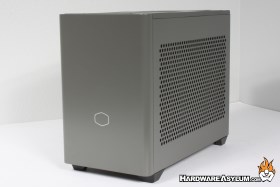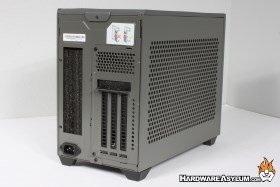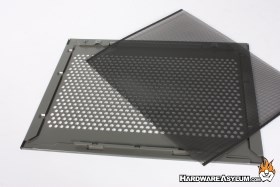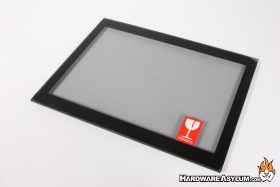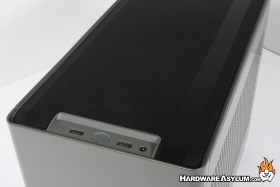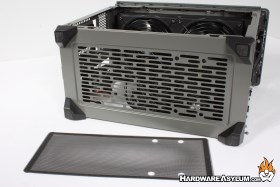Cooler Master NR200P Max Complete Case Review
Author: Dennis GarciaCase Layout and Features
The Cooler Master NR200P is a small form factor chassis design AND is very similar to the NR200 that I reviewed not long ago. Both cases support Mini ITX motherboards and are dependent on SFX and SFX-L power supplies.
Overall, the case is very, square. The front panel is solid with a simple silkscreened graphic of the Cooler Master logo and both side panels feature ample venting through a mesh of drilled holes.
The back of the case reflects the front. Along the left you will find an opening for the Mini ITX I/O and below that is a simple power plug and internally connects to the SFX/L PSU inside the case. To the right you will find three expansion slots oriented for a vertically mounted GPU. From here you can spot the first major difference between the two case designs. The NR200P MAX only supports vertical GPUs.
On closer inspection you can also see the entire panel swings out and away from the chassis internals giving you better access to install video cards without having to disassemble the rest of the chassis.
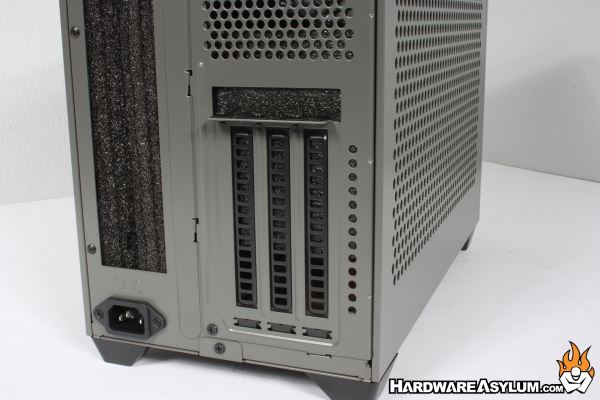
One thing you might also notice is the open area above the expansion slots. This is simply a product from the height difference between a Mini ITX motherboard and a typical expansion card but, it has an added benefit of supporting many “halo” style GPUs with an extra tall heatsinks.
You will get an option for two different side panels. The default is a SECC steel side panel with a mesh of holes for passive venting. There is no option to mount cooling fans to the side panels but, you do get magnetic fan filters on both sides to help control dust.
For those looking to show off the tempered glass side panel is an excellent option and included with every NR200P MAX chassis. You will find metal brackets bonded to the glass so the panel can be installed and removed just like the metal counterparts without any visible hardware.
The front panel I/O is extremely simple and consists of a single power and reset button and two USB 3.0 ports. Beyond the I/O is the primary exhaust for the NR200P MAX and the dark mesh does an excellent job at hiding the actual fan mountings below.
Speaking of airflow, the primary air intake for the NR200P MAX is at the bottom of the chassis. This highly free flowing vent is protected by a magnetic fan filter The four holes you see in the filter allow access to the screws that would be used to install a standard 3.5” HDD.
As an additional point of interest both the top and bottom panels are removable with just a couple screws allowing you the required access to successfully build in a SFF chassis like this.

